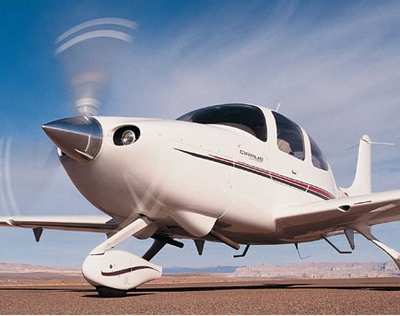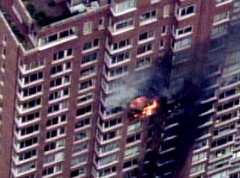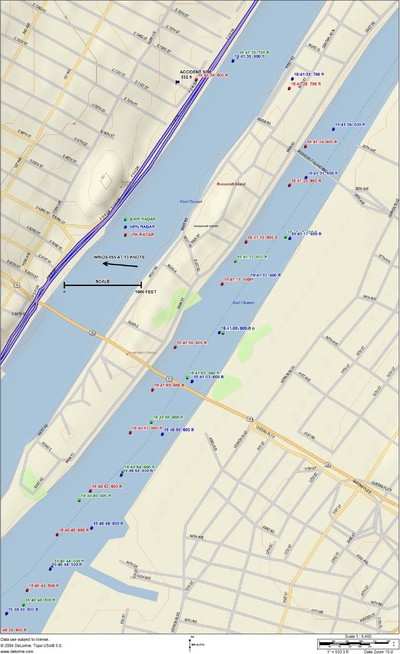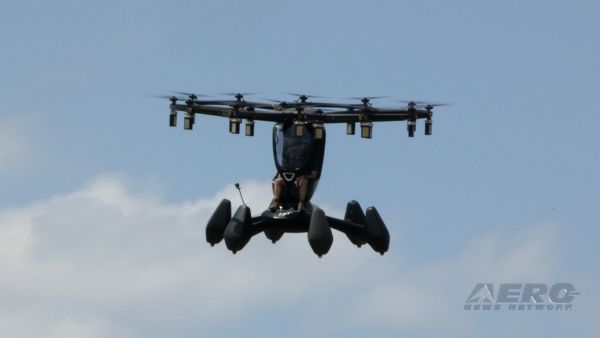Wind Caused Plane To Drift In Turn
 The National
Transportation Safety Board on Friday released the following update
on its investigation into the accident involving a Cirrus Design
SR20, N929CD, that crashed into an apartment building
while maneuvering above Manhattan, NY on October 11,
2006.
The National
Transportation Safety Board on Friday released the following update
on its investigation into the accident involving a Cirrus Design
SR20, N929CD, that crashed into an apartment building
while maneuvering above Manhattan, NY on October 11,
2006.
The accident occurred about 2:42 pm eastern daylight time. The
airplane was destroyed by impact forces and a post crash fire. The
certificated private pilot owner of the airplane, New York Yankees
pitcher Cory Lidle, and a certified flight instructor were fatally
injured. Marginal Visual Flight rules conditions prevailed, and no
flight plan was filed for the flight that departed Teterboro
Airport (TEB), Teterboro, New Jersey. The personal sightseeing
flight was conducted under the provisions of 14 Code of Federal
Regulations Part 91. There were 1 severe and 2 minor injuries on
the ground.
The Safety Board go-team was composed of four teams:
Airworthiness, Powerplants, Operations, and Witnesses. The Weather,
Air Traffic Control and Aircraft Performance group chairmen
gathered data from NTSB headquarters. Parties to the investigation
are Cirrus Design, Federal Aviation Administration, Teledyne
Continental Motors, and Ballistic Recovery System.
The on-scene examination of the wreckage has shown that there
was no sign of an in-flight fire or damage to the airplane. The
airplane impacted the 30th floor of the apartment building, bounced
off, then fell to the street below, where it came to rest inverted
and was engulfed in a severe post crash fire. The engine was
ejected from the airplane and entered the building through an
apartment window on the 30th floor.

The New York Central Park Automated Observation System reported
that at the time of the accident, that the winds were from 060
degrees at 6 knots, visibility at 7 statute miles, ceiling overcast
at 1800 feet above ground level, the temperature was 17 degrees
Celsius, the dewpoint was 13 degrees Celsius and the altimeter was
29.90 inches of Mercury (Hg). No visibility restrictions were
reported at any of the surrounding airport weather stations. An
aircraft that was landing at Newark Liberty International Airport
(KEWR) at the time of the accident was equipped with a weather
reporting capability that indicated that the winds at 700 feet
altitude were from 095 degrees at 13 knots.
 Over fifty witnesses to
the accident were identified and many interview summaries were
obtained from the New York Police Department. Eleven of those
witnesses saw the airplane before it impacted the building.
Over fifty witnesses to
the accident were identified and many interview summaries were
obtained from the New York Police Department. Eleven of those
witnesses saw the airplane before it impacted the building.
Radar data indicate that the airplane was flying over the east
side of Roosevelt Island prior to initiating a 180 degree turn. At
this location, there would have been a maximum of 2100 feet
clearance from buildings, if the full width of the river had been
used. However, from the airplane's mid-river position over
Roosevelt Island, the available turning width was only 1700 feet.
The prevailing wind from the east would have caused the airplane to
drift 400 feet toward the building during the turn, reducing the
available turning width to about 1300 feet. At an airspeed of 97
knots, this turn would have required a constant bank angle of 53
degrees and a loading of 1.7 Gs on the airplane. If the initial
portion of the turn was not this aggressive, a sufficiently greater
bank angle would have been needed as the turn progressed, which
would have placed the airplane dangerously close to an aerodynamic
stall.
(Note: This "box canyon" theory
was also put forth by CFI Tom Turner in an ANN Special Feature
recorded October 12, one day after the accident --
Ed.)
Since the accident, The FAA issued a Notice to Airman
prohibiting fixed wing aircraft such as the accident flight from
operating in the East River Class B Exclusion area where the
accident occurred unless authorized and controlled by ATC. This
will prevent pilots from encountering a situation in which they
must attempt a complete u-turn in order to avoid entry into
controlled airspace.
Maintenance records for the accident airplane indicated that all
Airworthiness Directives and Service Bulletins had been complied
with. The propeller and engine have been examined by Safety Board
investigators at their respective manufacturers and they indicated
that they were operating normally.

Additional work continues in the investigation. Two damaged
portable GPS units were recovered from the wreckage and sent to the
manufacturer to try to recover additional data. The memory chip
associated with the airplane's Multifunctional Display was
retrieved and sent to NTSB headquarters to try to recover any
stored data. A damaged laptop computer that was found in the
wreckage and may contain flight log information, is being examined
at NTSB headquarters. Several cockpit instruments are being
examined in the Safety Board laboratories, and work is underway to
enhance a video obtained from the Coast Guard that shows the
airplane's impact with the building.
 SpaceX to Launch Inversion RAY Reentry Vehicle in Fall
SpaceX to Launch Inversion RAY Reentry Vehicle in Fall Aero-News: Quote of the Day (04.23.24)
Aero-News: Quote of the Day (04.23.24) Aero-News: Quote of the Day (04.20.24)
Aero-News: Quote of the Day (04.20.24) ANN's Daily Aero-Linx (04.20.24)
ANN's Daily Aero-Linx (04.20.24) Aero-News: Quote of the Day (04.21.24)
Aero-News: Quote of the Day (04.21.24)






